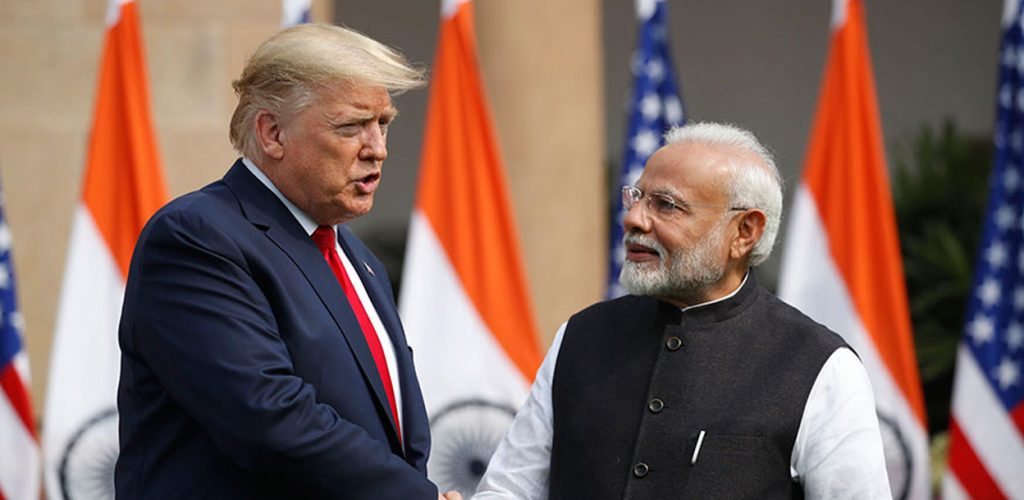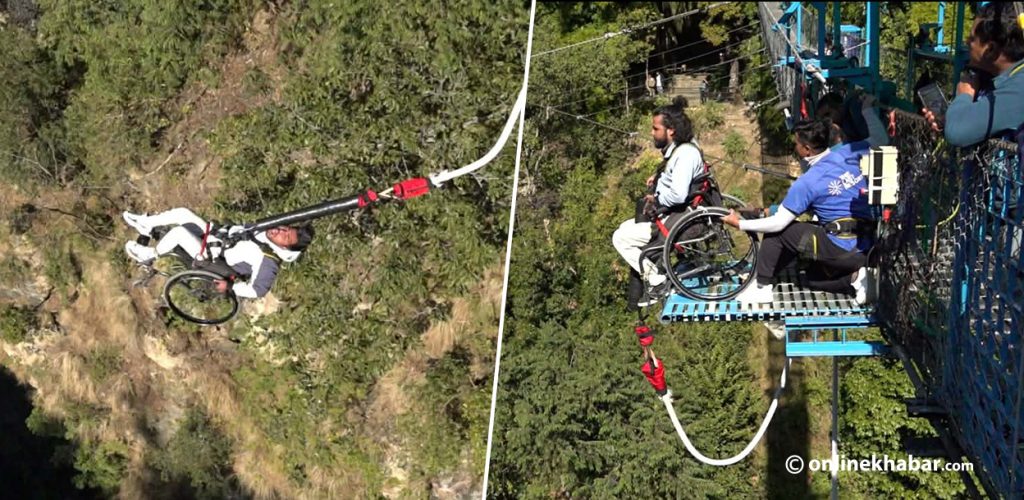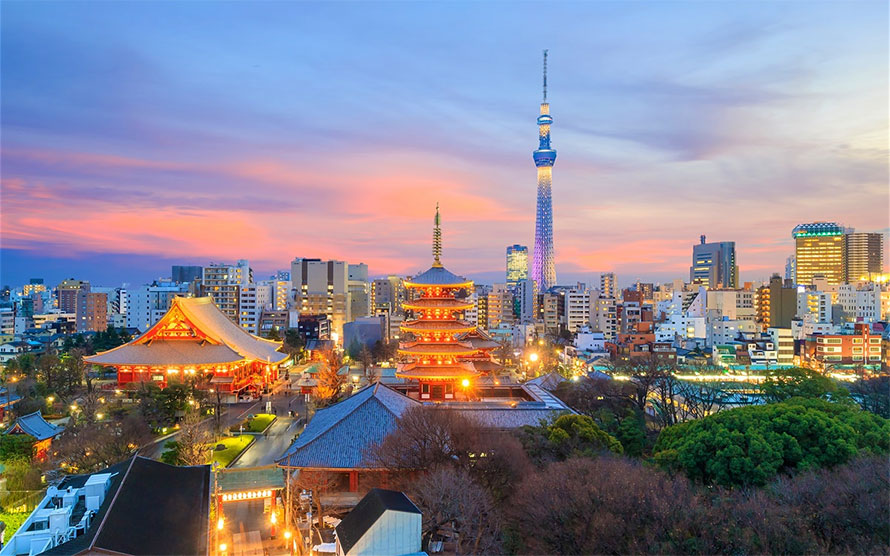
At a time when India is struggling after the United States imposed a 50 percent tariff, the same policy has emerged as a significant opportunity for Nepal.
The U.S. has imposed a 25 percent “reciprocal tariff” on India, which came into effect this Thursday.
In addition, U.S. President Donald Trump has imposed an extra 25 percent tariff on India, accusing it of purchasing oil from Russia. This tariff, imposed through an executive order, will take effect from August 27.
However, the U.S. has imposed only a 10 percent reciprocal tariff on Nepal. In this situation where trade negotiations with India have failed and the 50 percent tariff on India remains, the tariff gap between Nepal and India will be 40 percent. Even if Trump withdraws the recently added 25 percent tariff, there will still be a 15 percent difference between the two countries’ tariff rates.
“A 15 percent tariff difference is significant in international trade. Nepal should use such a situation to its advantage,” says Paras Kharel, Executive Director of the Kathmandu-based South Asian think tank, SAWTEE.
The U.S. is Nepal’s second-largest export destination. In the last fiscal year (2081/82 B.S.), Nepal exported goods worth Rs. 18.32 billion to the U.S., a 6 percent increase compared to the previous fiscal year (2080/81), when exports stood at Rs. 17.31 billion.
Nepal mainly exports carpets, chhurpi (hardened cheese), ready-made garments, felt products, as well as clay and other metal utensils.
According to Kharel, Nepal will also benefit from the fact that the U.S. has imposed 19–20 percent tariffs on other South Asian countries, including Bangladesh, Pakistan, and Sri Lanka. Carpets, textiles, and chhurpi products heavily exported from India to the U.S. will now be less competitive compared to Nepal’s exports. Similarly, in the case of ready-made garments, Bangladesh is South Asia’s largest exporter.
“In terms of tariffs, Nepal now has a much greater competitive advantage over these countries. Therefore, Nepal should certainly benefit from Trump’s new tariffs. If Nepal cannot benefit even under such favorable conditions, it means the country is simply incapable of doing trade,” he says.
Kharel added that after Trump implemented the new reciprocal tariff on August 7, a certain degree of stability can be seen in U.S. tariff rates.
“On April 2, the reciprocal tariff was imposed, then suspended in between. It was uncertain whether it would be enforced or not. But now, the current tariff is expected to last at least for Trump’s entire term,” he says. “In such a situation, Nepal should focus on increasing investment, attracting foreign capital, and capitalizing on the opportunities in the U.S. market.”
With Nepal’s Generalized System of Preferences (GSP) benefits already expired and the country now facing a 10 percent tariff, Nepal Export Council President Naresh Lal Shrestha says the fact that the tariff will not increase further presents an opportunity.
“Now, we can expect more foreign investment in Nepal and a rise in exports,” Shrestha says.
However, he stressed that the government should still negotiate with the U.S. to either reduce the tariff further or ensure it does not rise above the current 10 percent.
President of the Nepal Garment Producers Association, Pashupati Dev Pandey, is also optimistic about the latest reciprocal tariff policy.
“It’s still not entirely clear which countries the U.S. will impose which tariff rates on. Many countries are still in trade negotiations, so the rates might change,” he says. “But if the tariffs imposed on India, Bangladesh, Pakistan, and Nepal remain as they are, it will greatly expand Nepal’s production and exports.”
Currently, Nepal exports ready-made garments worth about Rs. 10.5 billion annually, with the U.S. accounting for about 40 percent.
“We currently export about Rs. 4 billion worth of ready-made garments to the U.S. If the existing tariff rates remain, this figure could increase fifty- to a hundredfold in a few years,” he said.
He added that products such as carpets, garments, felt, and pashmina would see qualitative growth in exports.
With higher U.S. tariffs on neighboring countries, Pandey expects increased orders for Nepali industries.
“When orders from abroad increase, production rises, and then industry capacity also grows,” he says. “In such a case, major foreign brands will begin transferring technology to Nepal.”
If this policy works in the long term, he believes the “backward and forward linkages” of Nepal’s export-oriented industries will become stronger.
Earlier, on April 2, President Trump had announced reciprocal tariffs, which he then suspended for three months on April 9.
“Even during the suspension period, inquiries for Nepali goods had started increasing,” Pandey says. “Now that the tariffs have been reinstated, Nepal’s exports will definitely grow.”
He emphasized that the government should help expand trade by reducing interest rates, minimizing administrative hassles, and creating a favorable export environment.
He also urged the Nepal government to make exports to the U.S. even more competitive.
“After the earthquake, the U.S. granted preferential market access to 77 Nepali products. The government should push for similar facilities again. We want trade negotiations with the U.S. to be initiated under the leadership of the foreign minister,” he said.
In 2015, after the earthquake, the U.S. granted duty-free access to 77 types of Nepali goods under the “Nepal Trade Preference Program” (NTPP). According to SAWTEE’s Kharel, about 8.5 percent of Nepal’s total exports fall under this program, which is set to expire this December.
Similarly, the U.S. has not renewed Nepal’s GSP benefits since 2020. Under this facility, 12.5 percent of Nepal’s exports went to the U.S., Kharel says.
He believes there is little chance that the U.S. will now renew both the NTPP and GSP.
Around 11 percent of goods exported from Nepal face various tariff rates.
“Apart from that, about 66 percent go at zero tariffs,” he says. “These products had zero tariff facilities for Nepal as well as for other countries.”
Now, he explains, the same tariff rates will be applied to each country according to the new U.S. policy.
“For Nepal, goods that now have a 10 percent tariff will continue at that rate, while India will face tariffs of up to 50 percent on the same items, and Bangladesh will pay 20 percent,” he says.
Nepal’s unique products, such as chhurpi made from Himalayan cow and buffalo milk , will not be significantly affected even with the 10 percent tariff, since other countries do not export such goods in notable quantities.
“India also exports such goods. But while India will face at least 25 percent tariffs, Nepal will pay 10 percent, giving Nepal a 15 percent advantage,” Kharel says.
Under the NTPP, carpets and shawls will now face a 10 percent tariff from Nepal, but similar products from India or Bangladesh will be charged much higher, boosting Nepal’s competitiveness. The top carpet exporters to the U.S. are China, India, and Turkey.
For such goods, Nepal will pay a 10 percent tariff, India will continue to face 50 percent under current conditions, and Turkey will pay 15 percent.
Similarly, for ready-made garments and other items that were already paying regular tariffs, Nepal will still be cheaper in the U.S. market in terms of tariff rates.
“Currently, the U.S. imposes a 13 percent tariff on ready-made garments, which will now rise to 23 percent for Nepali garments after adding the 10 percent. However, when the same goods are exported from India, their tariff rates will rise even higher, giving Nepal an advantage,” he said.
Before the abolition of the Multi-Fiber Agreement, Nepal was already exporting large quantities of garments.
In 2026, Nepal, Bangladesh, and Laos will graduate from the Least Developed Countries category. The U.S. has imposed tariffs of 40 percent on Laos and 20 percent on Bangladesh.
However, with Nepal facing lower tariffs, there is a high risk that goods from other countries might be routed through Nepal for export to the U.S. If such transshipment is proven, Trump has announced that the same tariffs will be applied as if the goods were from the original country.
“We must be very cautious to ensure that goods made in countries like India are not routed through Nepal,” says exporter Pandey to Onlinekhabar. “For this, a joint mechanism between the government and the private sector should be established.”
Trade expert Kharel also stressed the need to protect the country from the risk of transshipment.
“Looking at its trade agreement with Vietnam, the U.S. is very vigilant about preventing goods from other countries from being exported through a partner country just to get tariff benefits,” he says. “Just as it is concerned about goods produced in China being routed through Vietnam, it will be equally alert about Indian-made goods being exported from Nepal. Therefore, Nepal itself must work to minimize that risk.”



















